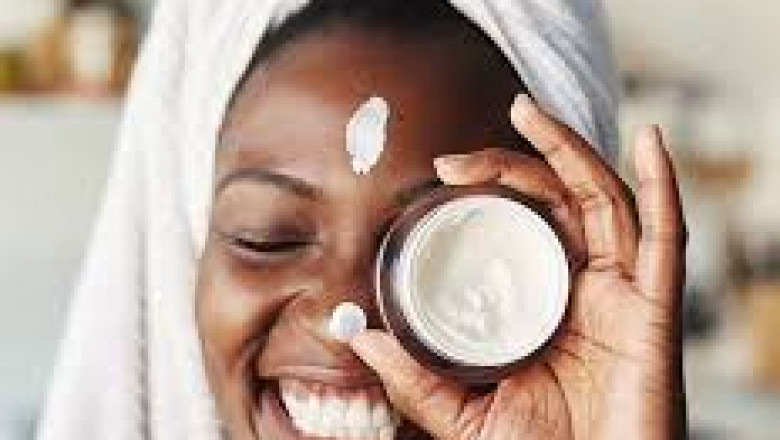views
The Anti-Ageing Ingredients Market is undergoing a revolutionary transformation powered by scientific innovation, biotechnology, and evolving consumer expectations. As skincare becomes more sophisticated and science-backed, global innovations are playing a pivotal role in shaping how beauty brands formulate and market anti-ageing products.
Breakthroughs in Ingredient Discovery and Development
Innovation in the anti-ageing segment begins at the molecular level. Recent breakthroughs in ingredient discovery are being driven by advanced scientific techniques such as:
-
Genomics and proteomics to understand skin aging at the cellular level.
-
AI-driven compound screening to identify new bioactive agents.
-
Synthetic biology to produce rare or expensive natural actives in a lab environment.
These tools allow researchers to isolate and enhance compounds that offer superior skin benefits, such as collagen stimulation, wrinkle reduction, hydration retention, and cellular repair.
For example, lab-engineered growth factors, enzyme-boosting peptides, and engineered probiotics are emerging as next-gen anti-ageing ingredients.
Biotech-Powered Skincare Advancements
Biotechnology is becoming the core engine of innovation in anti-ageing skincare. It enables manufacturers to replicate the skin’s natural molecules, improve ingredient stability, and optimize delivery systems.
Key biotech advancements include:
-
Recombinant collagen and elastin proteins for firming and plumping effects.
-
Microbiome-friendly ingredients, including prebiotics and postbiotics, that promote healthy skin flora.
-
Enzyme inhibitors that slow down processes associated with aging, such as glycation and collagen degradation.
Such biotech solutions are more sustainable and scalable than harvesting from traditional sources, and they offer consistent quality—vital for premium skincare formulations.
Global Ingredient Trends Reshaping Formulations
Innovation varies across global regions based on cultural trends and regulatory influences. However, certain ingredients have gained universal popularity:
-
Bakuchiol: a plant-based retinol alternative from India, now globally accepted.
-
Snail mucin: popularized in South Korea for skin regeneration and elasticity.
-
Astaxanthin: a powerful antioxidant extracted from microalgae, gaining traction in Japan and the U.S.
-
CBD and adaptogens: widely used in North America for their calming, anti-inflammatory properties.
-
Niacinamide and ceramides: dominating European and global markets for skin barrier support.
As regional innovation spreads through global trade and digital platforms, these ingredients influence formulation strategies worldwide.
Smart Delivery Systems Enhancing Efficacy
Delivering active ingredients to the skin in a stable, effective manner is just as important as discovering them. Innovative delivery systems have become key to boosting product performance and user satisfaction.
Examples include:
-
Nanoemulsions for better absorption and texture.
-
Encapsulation of sensitive ingredients like retinol to prevent degradation.
-
Time-release formulations for longer-lasting benefits.
-
Transdermal patches and microneedle masks for deeper skin penetration.
Such innovations not only improve efficacy but also reduce irritation—making powerful actives more accessible to sensitive skin users.
Sustainability as an Innovation Driver
Sustainability is no longer just a corporate goal—it is an innovation imperative. Brands and ingredient developers are pushing boundaries to create eco-conscious solutions without compromising on performance.
Key areas of sustainable innovation:
-
Upcycled ingredients from food and agriculture by-products.
-
Waterless and solid-format actives to reduce environmental impact.
-
Biodegradable delivery systems and green extraction methods.
-
Fermentation-based production to replace wild-harvested botanicals.
Consumers increasingly demand transparency and ethical sourcing, motivating companies to integrate sustainability into the early stages of ingredient development.
Innovation in Consumer Engagement and Personalization
Advancements in beauty tech are reshaping how anti-ageing products are sold and formulated. Ingredient companies are now offering APIs that allow brands to customize formulations based on skin scans, climate, and lifestyle inputs.
Key innovations include:
-
AI skin analysis tools for personalized ingredient selection.
-
Consumer-facing education platforms that explain ingredient science.
-
Ingredient traceability apps using blockchain to ensure supply chain transparency.
These innovations not only inform but empower consumers, making them active participants in the skincare process and fostering brand loyalty.
Future Outlook: What’s Next in Global Anti-Ageing Innovation?
Looking ahead, the anti-ageing ingredient market will continue to evolve through:
-
Greater integration of ingestible and topical solutions for holistic anti-ageing.
-
Cross-category formulations combining skincare with mental wellness and immunity.
-
Innovations in stem cell science and epigenetics to target aging at the DNA level.
-
Expansion of custom microdosing systems to deliver exact ingredient combinations.
The global nature of these innovations ensures that successful concepts from one region can rapidly influence trends across the world, making the market highly dynamic and interconnected.
Conclusion
The global anti-ageing ingredients market is being reshaped by innovation at every level—from discovery and development to delivery and engagement. As science and beauty converge, consumers can expect more effective, sustainable, and personalized skincare solutions.
For companies, staying ahead means investing in R&D, forming strategic partnerships, and remaining agile in the face of rapid technological advancement. The future of beauty lies in smart, ethical, and globally inspired innovation.













![¿Cómo puedo contactar con una persona en vivo en los vuelos de Frontier? [Guía paso a paso]](https://timessquarereporter.com/upload/media/posts/2025-06/12/como-puedo-contactar-con-una-persona-en-vivo-en-los-vuelos-de-frontier-guia-paso-a-paso_1749705127-s.jpg)


![How Do I Get to a Live Person at Frontier Flights? [Step-by-Step Guide]](https://timessquarereporter.com/upload/media/posts/2025-06/12/how-do-i-get-to-a-live-person-at-frontier-flights-step-by-step-guide_1749705004-s.jpg)





Comments
0 comment